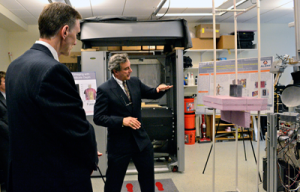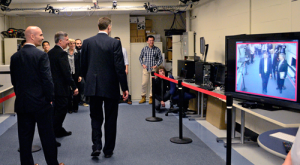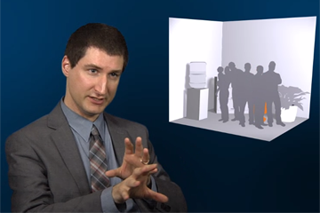News & Events
Student Central
ALERT 101 is Back! July 17, 2013
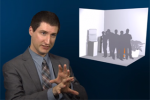
ALERT 101: Video Analytics
We are pleased to present the second installment of ALERT 101. This segment’s topic is Video Analytics. ALERT researchers Richard Radke, Octavia Camps, and Venkatesh Saligrama explain what it is, how it’s used, and how they teach computers how to see and learn.
For users without YouTube access: ALERT 101: Video Analytics
This material is based upon work supported by the U.S. Department of Homeland Security under Award(s) 2008-ST-061-ED0001 and/or 2008-ST-061-ED0002. The views and conclusions contained in this document are those of the authors and should not be interpreted as necessarily representing the official policies, either expressed or implied of the U.S. Department of Homeland Security
Inspired by the success of TED (www.ted.com) and other educational media forums, ALERT has developed the ALERT 101 video series. Each video short features different technologies and research areas that the ALERT Center engages in. We hope that these productions help educate and inform the global community on these topics in an accessible and enjoyable way.
ALERT hosts TSA Administrator, John Pistole and Boston Air Security Officials at NEU June 18, 2013

On June 12th, 2013, the ALERT Center at Northeastern University hosted a visit by the Transportation Security Administration (TSA) Administrator, John Pistole, along with acting Boston Field Office Supervisory Air Marshal, David Brown, Boston Logan International Airport Federal Security Director, George Naccara and Kenneth Fletcher, Senior Advisor to the Deputy Administrator at TSA.
The visit was led by the Deputy Director of ALERT, Professor Carey M. Rappaport and included a tour of the Advanced Imaging Technology (AIT) lab where a group of 20 undergraduate and graduate students participated in demonstrations of ALERT research projects, including Multistatic Millimeter-Wave AIT scanning and Real-Time High-Value 3D External Surface Imaging using the X-Box Kinect sensor.
Professor Rappaport also presented his Standoff Detection Experiment, which uses a powerful millimeter-wave radar unit to detect threats from a distance, such as concealed body-worn explosives.
The tour continued in the Video Analytics Lab run by ALERT Professors Octavia Camps and Mario Sznaier. Using cameras and monitors, Professors Camps and Sznaier, along with their students, staged the lab to look like an airport exit lane, and asked Administrator Pistole and his associates to participate in a demonstration of the lab’s Video Analytic Surveillance Transition (VAST)software. The demonstration showed how their software flags “counter-flow” activity, by detecting people who walk “in” through an “exit” lane, thereby alerting security personnel if a person attempted to bypass a TSA checkpoint. Similar software is used for identifying left objects, which was demonstrated by the team when another program flagged a backpack which was left on the ground by a student walking through a crowd.
The visit was an excellent opportunity to present both ALERT research, and other security research that is being done at Northeastern University to Administrator Pistole and his group.
United States Secret Service Seeking Eligible Students with Chemistry Backgrounds May 23, 2013
The United States Secret Service would like to fund a COE, using the BOA, to support their Dynamic Ink Aging project. This project involves performing a series of experiments to determine the optimized parameters for assessing the age of ballpoint writing ink.
They are looking for two students who are citizens of the United States, chemistry majors and are able to obtain a security clearance or already have a clearance. Students have the option to either work on-site in Washington D.C. in the USSS Forensic Lab or off-site in their own university labs. If the students work off-site they must have access to a gas chromatograph/mass spectrometer (GC/MS) and a thermal desorption unit (TDU). It is anticipated that the length of the project will be one year.
If interested, please send a resume, bio, and a list of chemistry courses to:
Melanie Smith
Connections are made at ASPIRE March 28, 2013

The ALERT COE and its predecessor, the Bernard M. Gordon Center for Subsurface Sensing and Imaging Systems has had a thirteen year history of close collaboration with our industrial partners. To continue this tradition, we have instituted a new annual event, the Annual Student Pipeline Industry Roundtable Event otherwise known as ASPIRE.
ASPIRE’s goal is to have our industrial partners introduce their companies, their products, and their future needs to one another, to our faculty, and to our student population. Held on March 19, 2013, ASPIRE started with 10-minute presentations by our industrial members, followed by short 2-minute presentations by students. It culminated in a two-hour networking session, consisting of twelve 10 minute “roundtable” discussion slots that companies and students selected as part of the registration process.
The initial feedback from both the industry and our student population has been extremely positive. Four of our small company members have scheduled follow-on meetings with our large member companies, such as Analogic, Raytheon and Siemens. Siemens Corporate Research is also interviewing ALERT graduate students for five new positions. Many of our participants have requested that ASPIRE be held semiannually.
Through such events, ALERT hopes to create closer collaboration amongst our industrial base, while finding the “right” match for our students and partner institutions. We expect that such alliances will respond with agility to future market opportunities as well as government BAAs and RFPs, thereby fostering effective technology transfer.
[photo credit: Craig Bailey/Perspective Photo]
2013 ALERT REU Summer Program Now Accepting Applications January 16, 2013
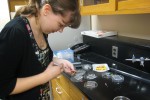
We are accepting applications for the upcoming ALERT REU Program. The 10-week paid summer program offers undergraduate engineers the opportunity to engage in ALERT research with faculty members located at Northeastern University in Boston, Texas Tech University in Lubbock, and the University of Puerto Rico in Mayagüez. The application deadline is February 22, 2013. For more information, and to apply, visit the REU webpage.
Read MoreNational Research Council seeks Applications for Research Associateships December 6, 2012
Per the National Academies:
The National Research Council of the National Academies announces the 2013 Graduate, Postdoctoral and Senior Research Associateship Programs to be conducted on behalf of federal research laboratories and affiliated institutions in over 100 locations throughout the United States. These programs provide opportunities for Ph.D., Sc.D., or M.D. scientists and engineers of unusual promise and ability to perform research on problems largely of their own choosing, yet compatible with the research interests of the sponsoring laboratory. Initiated in 1954, the Associateship Programs have contributed to the career development of more than 12,000 scientists and engineers ranging from young researchers and recent Ph.D. recipients to distinguished senior scientists.
Annual Application Deadlines: Feb. 1st, May 1st, Aug. 1st, & Nov. 1st
For more details on the awards and application process, please visit the NRC website via the “Read More” link below:
Read MoreALERT presents the first installment of ALERT 101: Airport Screening Technologies December 1, 2012

We invite you to watch the first episode of ALERT 101 which focuses on the applications of Millimeter Wave Scanning and Backscatter X-ray in Airport Security Screening.
For users without YouTube access: ALERT 101: Airport Screening Tecnologies
Inspired by the success of TED (www.ted.com) and other educational media forums, ALERT has developed the ALERT 101 video series. Each video short will feature different technologies and research areas that the ALERT Center engages in. We hope that these productions help educate and inform the global community on these topics in an accessible and enjoyable way.
ALERT welcomes United States Secretary of Homeland Security, Janet Napolitano November 19, 2012
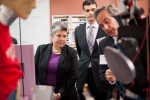
Awareness and Localization of Explosives-Related Threats was pleased to host U.S. Secretary of Homeland Security, Janet Napolitano on Monday, November 12th following her keynote address at Northeastern University’s Veteran’s Day Ceremony.
To kick off the visit, ALERT’s Director, Professor Michael B. Silevitch, provided Secretary Napolitano with an overview of the ALERT Center of Excellence. Prof. Silevitch then introduced undergraduate and graduate students involved with ALERT research and gave a summary of the demonstrations in video analytics and advanced imaging technologies that were prepared for her briefing. Michael described Napolitano’s visit as a significant opportunity for ALERT and its homeland security research, saying,
“It was very important to get validation from Secretary Napolitano about the relevance of our research and its transition to the field in the areas of video tracking of threats and passenger screening. This acknowledgement inspires us.”
Professor Octavia Camps led the first demonstration featuring ALERT’s Engage to Excel (E2E) Video Analytic Surveillance Transition project, VAST. VAST is a program developed in partnership with Siemens and the Cleveland Transportation Security Administration. The live demonstration exhibited the video analytic counter-flow program developed by Dr. Camps and her team and its ability to automatically detect when a person is proceeding the wrong way in an identified traffic pattern (for example, trying to enter through an exit). The resulting detections enable quick identification of an incident and minimize the impact on TSA resources. This project is currently installed within the Cleveland Hopkins International Airport.
Following the video analytics demonstration, Professor Carey Rappaport showed Secretary Napolitano the capabilities of the ALERT Advanced Imaging Technologies (AIT) laboratory. This laboratory fuses together various scanning tools to create next-generation security scanning systems. Professor Rappaport, Assistant Professor Jose Martinez and graduate student Spiros Mantzavinos demonstrated the operation and data acquisition capabilities of ALERT’s advanced portal-based millimeter-wave imaging radar. During the demo, the system scanned a mannequin wrapped in a skin simulant with various representative objects attached for detection. These types of AIT systems can be used to detect illicit items that passengers may be attempting to carry on their person.
“As a DHS-supported researcher, I found Secretary Napolitano’s visit very satisfying,” Prof. Rappaport commented. “She was of course quite knowledgeable about the science and technology we are pursuing, but she seemed keenly interested in how we were improving the state of the art. She was completely supportive and she motivated the students with her passion to keeping Americans safe.”
Spiros Mantzavinos, currently a Northeastern University Doctoral Candidate in Electrical and Computer Engineering and Gordon Engineering Leadership Fellow, had the opportunity to meet Secretary Napolitano. Mantzavinos said, “It was an honor to host Secretary Napolitano for a visit to our ALERT whole-body imaging lab. Receiving attention and recognition from such a prominent figure in the national security arena assures the relevance of the advances we are making.”
Transition Task at CLE: The Student Perspective November 6, 2012
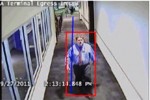
The ALERT project VAST (Video Analytic Surveillance Transition) is an effort that addresses the needs of the TSA to monitor and mitigate threats by individuals to airport security. ALERT and the TSA Ohio Senior Federal Security Director put together a team of researchers from three COE partner universities (NEU, BU and RPI) and TSA practitioners to develop and transition solutions to “in-the-exit” and “tag and track” issues at Cleveland Hopkins International Airport (CLE). The VAST team also has an industrial partner, Siemens Corporate Research, to guide the technology transition into markets, and to lead the design and development of a testbed at CLE.
In an effort to educate the next generation of researchers, the COE partner universities have also brought on students to the teams. Tom Hebble, a student participating from Northeastern University explains, “We travel to Cleveland every week in order to install the software and collect results. Currently there are three universities working on this, and every week someone from one of the three is in Cleveland. Their job is to install the latest revision of their code, as well as collect the results from the previous week’s test, so every few weeks we’re getting a new revision out there and a few weeks of data to look at and analyze.” As stated by Post-doctoral researcher Mohamed Elgharib of Boston University, “Even though I’ve been in research for almost 4 years, ALERT was the first industry-like experience that I’ve been through. I’ve learned how to create a product that satisfies a wider community of end-users, rather than just satisfying a narrow community.” Ziyan Wu of Renssellaer Polytechnic Institute explains, “before this project, I wrote my code just to implement specific functions and make things work. This is the first time I’ve needed to seriously think about user experience, that is, I need to make my software user friendly and easy to understand. This software will be used for security surveillance, so I really need to ensure its reliability and robustness”.
Here, students realize that they are not just trying to solve a problem, they need to completely conquer it. That is to say that the algorithm developed needs to be applicable to every circumstance without exception or limitation. According to Binlong Li of Northeastern University, “it’s precious industry experience that is a big plus for newly graduated students. We are able to understand how a real project works and is developed in the industrial world. We get a good sense of how to transfer research techniques into real applications”. As Wu continues, “I understand that all research should originate from reality. It has to be rooted in the reality, serve the reality, and then enhance the reality”.
As Hebble closes, “it’s an experience of going through the design cycle of coming up with a new revision, looking at the results, making corrections, and seeing that cycle of looking at the results to find problems and coming up with new ways to solve them. This is a good experience from that standpoint, to get real hands-on design experience as well as the experience with the code.”
Undergraduates Present Summer Discoveries August 16, 2012

Twenty-One undergraduate students from eight colleges and universities throughout the country presented a host of innovative research projects over the course of a week at various locations including Northeastern University. The student presentations were the culmination of the work they performed through participation in the 2012 Research Experience for Undergraduates (REU) program.
The REU program, supported by both ALERT and Gordon-CenSSIS, places undergraduate students in research labs for the summer semester to work on center related research in a testbed environment.
View News@Northeastern’ s article on the REU Program and event:
Read More
